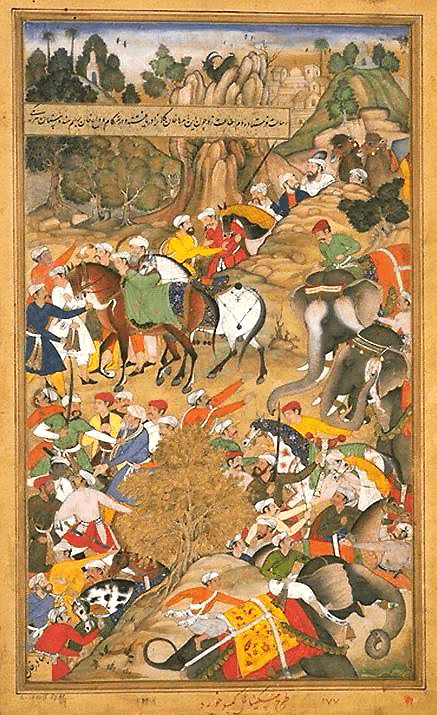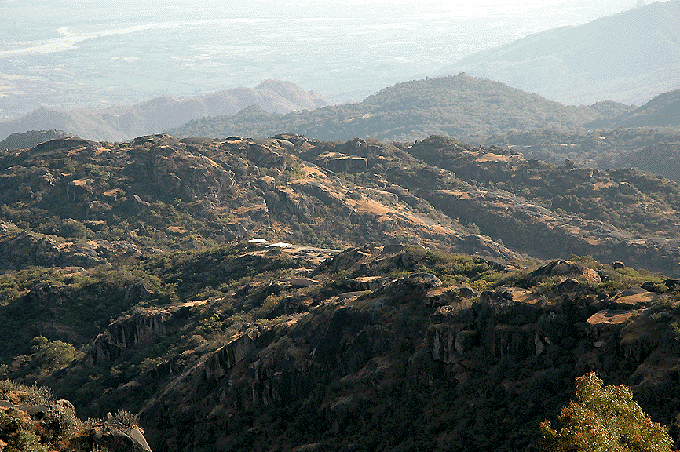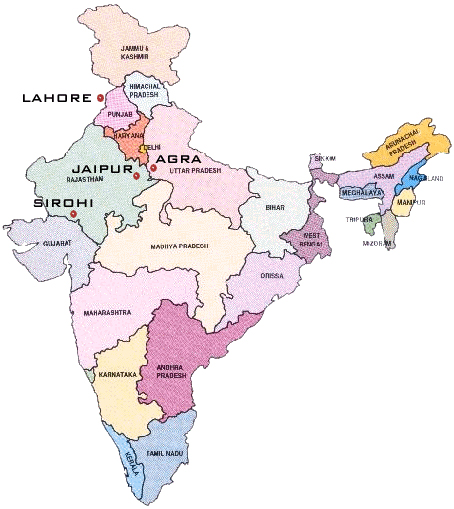
|
|
|
|
BY: SUN STAFF

Akbar Plunders the Village of Sirohi Jul 05, 2010 — CANADA (SUN) — A serial presentation of the Mughal effect on Vaisnava society. Akbar's first major conquest in North India was his invasion of Malwa, in 1561 A.D. The troops were led by his general, Adham Khan, and the cruelty they visited upon the Hindu residents of Malwa was so severe that local warriors continued an informal campaign against Akbar's presence until the time of his death.
Around the same time, the Mughals also conquered the eastern Gond kingdom (Deogarh), bringing their queen, Rani Durgavati under Mughal rule. In the decade following his conquest of Malwa, Akbar proceeded to conquer Rajasthan, Gujarat and Bengal. After taking the fort at Chittor and destroying the nearby Kalika temple, Akbar built a walled capital at Agra in 1569, called Fatehpur, which included palaces for his senior queens, a huge man-made tank, and many opulent courtyards.

Mount Abu, Sirohi District, Rajasthan Four years after taking Chittor, in 1572, Akbar's men marched across the Marwar plains toward Gujarat. Along the way they plundered various villages, including the small hillside kingdom of Sirohi, in the southwest of Rajasthan. The hills and rocky ranges of Sirohi were formidable fighting grounds, being dominated by the massive granite presence of Mount Abu and the rugged terrain surrounding it. The Rajput defenders offered fierce resistance to Akbar's armies. Under the guidance of Rajput leader, Man Singh Deora, they repeatedly held off the Mughals. In the years that followed, the local Sirohi leaders flipped back and forth as politics demanded, siding sometimes with the Mughals and other times with the Mewaris, as the conflict between Akbar and the Rajput king of Mewar, Maharana Pratap, persisted. Over the long years of Mughal invasion in Rajasthan, a great many Vaisnava temples were destroyed, including many in the Sirohi region, which covers a large portion of the state. One of the ancient temple villages pillaged by the Mughals was Vasantgarh, which lies about 60 km. northeast of Mount Abu. Situated along the Saraswati River near the northern border of Gujarat, Vasantgarh was home to an ancient temple of Lord Brahma, in his two-armed, three-faced form. Also known as the temple of Bharga, it was constructed by Vasistha, and was surrounded by many other important Vaisnava temples of the time. A more detailed account of the worship of Lord Brahma in the Sirohi region was presented in our recent series on Brahma Worship. Akbar led many campaigns in the northwest of India during the time his court was established at Agra. This capital city was soon abandoned, however, as Akbar moved the court from Agra to Lahore, in 1585. Some historians speculate that the move was necessitated by a lack of water at the Agra compound, while others suggest that Akbar needed to be closer to the important territories he was capturing in the northwest, like the regions around Sirohi, which needed to be constantly defended. Akbar's move to Lahore was also temporary, and in 1599 he again returned to Agra, re-establishing his royal court and ruling there until his death. While we refer here to Akbar's capital city courts, he also established courts in several outlaying areas. One of these was Galta, a valley near the present day city of Jaipur, where our story will continue in tomorrow's segment. To give the reader a sense of the distance between the various locales where Akbar was campaigning in northwest India, the distance between his courts at Agra and Lahore is about 680 km. From Agra to Mount Abu in the Sirohi region is about 740 km. From Agra to Jaipur is just 230 km., and Galta is just 10 km. outside Jaipur city.

| |